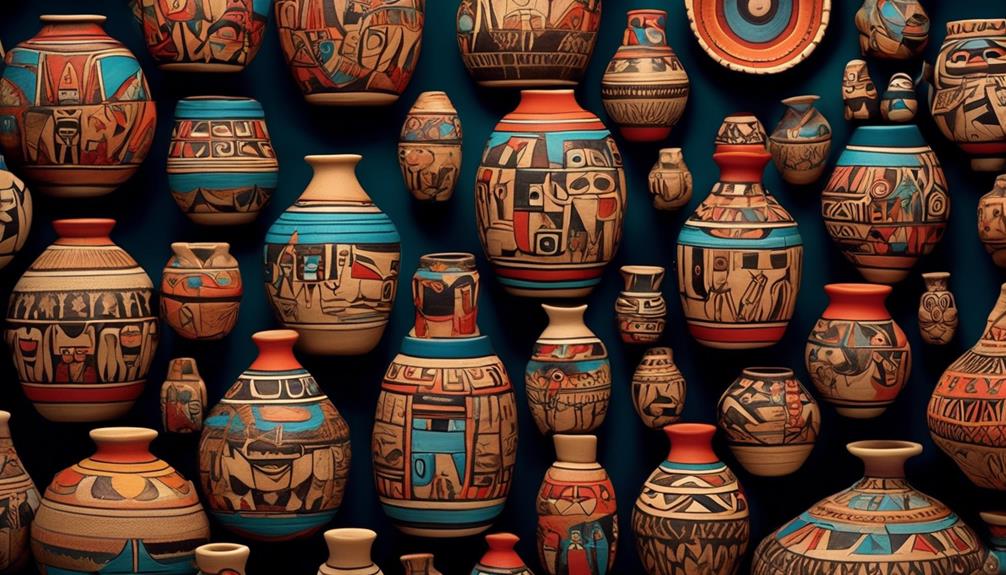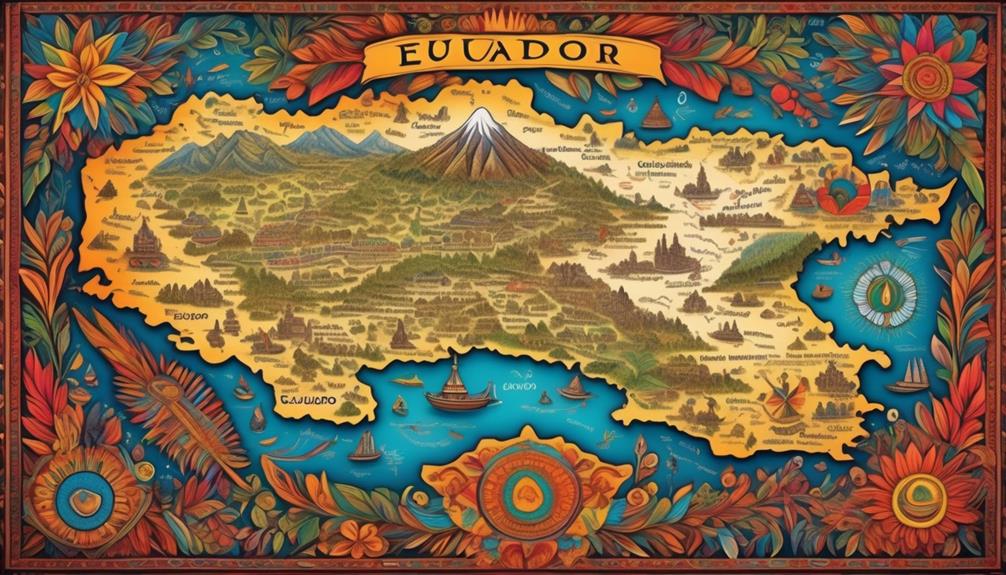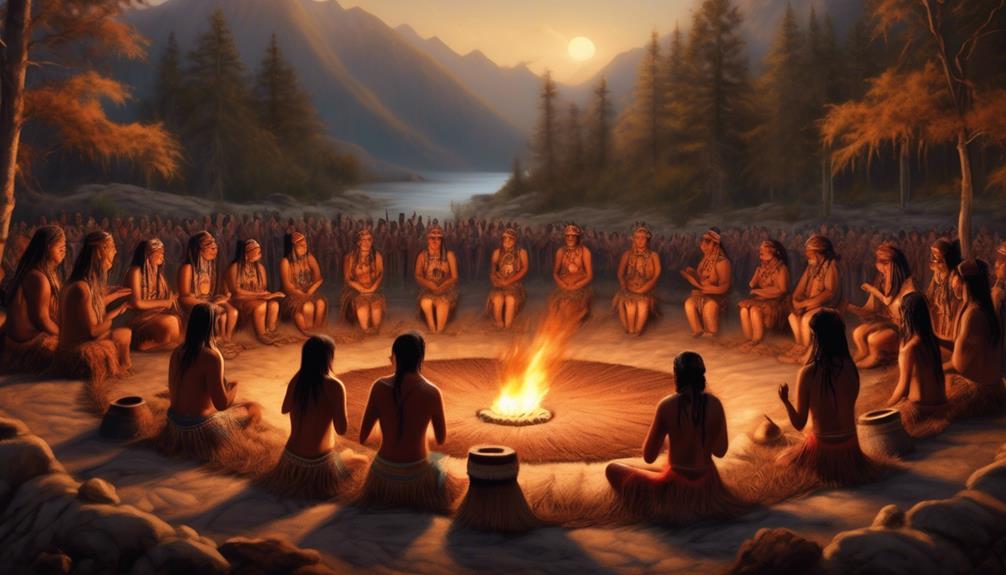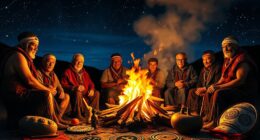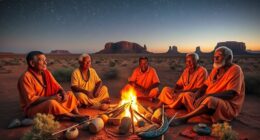When considering Guatemala, one cannot overlook the vibrant indigenous culture that runs deep in the country’s past. A specific community stands out, representing a substantial part of Guatemala’s population.
Their traditions, customs, and history have shaped the country in profound ways. As we explore the intricate layers of Guatemala's cultural landscape, we'll uncover the depth of influence this indigenous group has had, and the challenges and triumphs they continue to experience.
Key Takeaways
- The Maya civilization flourished in Mesoamerica and is a significant indigenous group in Guatemala's population.
- Maya traditions and cultural practices have a deep-rooted significance, including their advanced understanding of astronomy, mathematics, and hieroglyphic writing.
- The Maya population faces challenges such as social inequality, marginalization, and the erosion of traditional practices and languages.
- The Maya community contributes to Guatemala's economy through agriculture, traditional crafts, and economic resilience.
The History of the Maya People
The rich and complex history of the Maya people spans thousands of years, encompassing a vibrant tapestry of cultural achievements, societal structures, and spiritual beliefs.
The Maya civilization, known for its advanced understanding of astronomy, mathematics, and hieroglyphic writing, flourished in Mesoamerica. Their ancient ruins, such as the iconic pyramids of Tikal in Guatemala, stand as a testament to their architectural prowess and sophisticated urban planning. These impressive structures provide a glimpse into the intricate social and religious practices of the Maya people, reflecting their deep connection to the natural world and celestial bodies.
The Maya civilization was characterized by city-states ruled by powerful kings, intricate trade networks, and a complex religious system centered around the worship of deities associated with nature and the cosmos. The ancient ruins of Palenque and Chichen Itza further reveal the grandeur and artistry of Maya architecture, with elaborate stone carvings and towering pyramids that served as ceremonial centers and astronomical observatories.
Exploring these ancient sites offers a profound insight into the cultural and historical legacy of the Maya people, showcasing their remarkable achievements and enduring influence on the world.
Cultural Significance of Maya Traditions
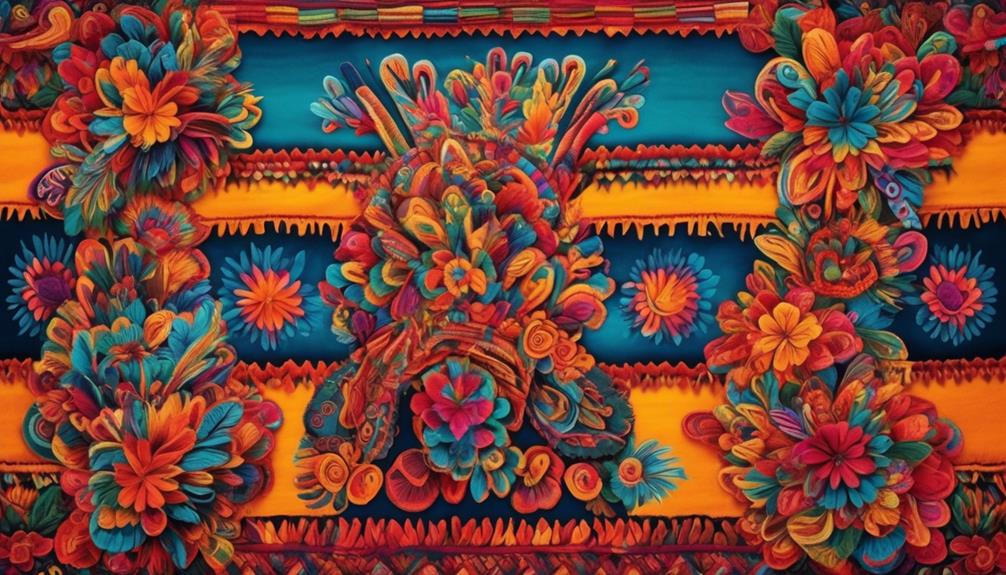
Rooted deeply in the fabric of Maya society, the cultural traditions hold profound significance in shaping the collective identity and worldview of the indigenous group in Guatemala. These traditions aren't just practices but a way of life that has been passed down through generations, preserving the rich heritage of the Maya people.
The cultural significance of Maya traditions can be seen through:
- Maya Art: The intricate and vibrant art forms, such as weaving, pottery, and painting, aren't only expressions of creativity but also serve as a means to communicate stories, traditions, and beliefs of the Maya culture.
- Spiritual Beliefs: The Maya traditions are deeply intertwined with spiritual beliefs that encompass a profound connection to nature, celestial bodies, and ancestors. Rituals, ceremonies, and offerings are essential components of Maya spirituality, reflecting a harmonious relationship with the natural and supernatural world.
- Oral Tradition: The transmission of knowledge and history through oral tradition is a cornerstone of Maya culture, ensuring that the wisdom and stories of the past are preserved and passed on to future generations.
- Community Practices: Maya traditions emphasize communal values and practices, fostering a strong sense of unity and solidarity within the community.
These traditions are more than just customs; they're a testament to the resilience, creativity, and spiritual depth of the Maya people.
Challenges Faced by the Maya Population
Embedded within the rich tapestry of Maya traditions are the enduring challenges faced by the Maya population in Guatemala, reflecting the complex interplay between cultural heritage and contemporary obstacles.
The Maya identity, deeply rooted in centuries-old customs and beliefs, faces significant threats in the modern world. One of the foremost challenges is the pervasive social inequality experienced by the Maya people. Despite being an integral part of Guatemala's cultural fabric, the Maya population often encounters marginalization and discrimination, limiting their access to education, healthcare, and economic opportunities.
This social inequality perpetuates a cycle of poverty within Maya communities, hindering their ability to thrive in the rapidly changing society. Furthermore, the struggle to preserve their cultural heritage in the face of globalization and modernization poses a profound challenge to the Maya population. The erosion of traditional practices and languages, exacerbated by external influences, poses a threat to the continuity of the rich Maya cultural legacy.
Navigating these multifaceted challenges while upholding their identity and traditions demands resilience and unwavering determination from the Maya population.
Economic Contributions of the Maya Community
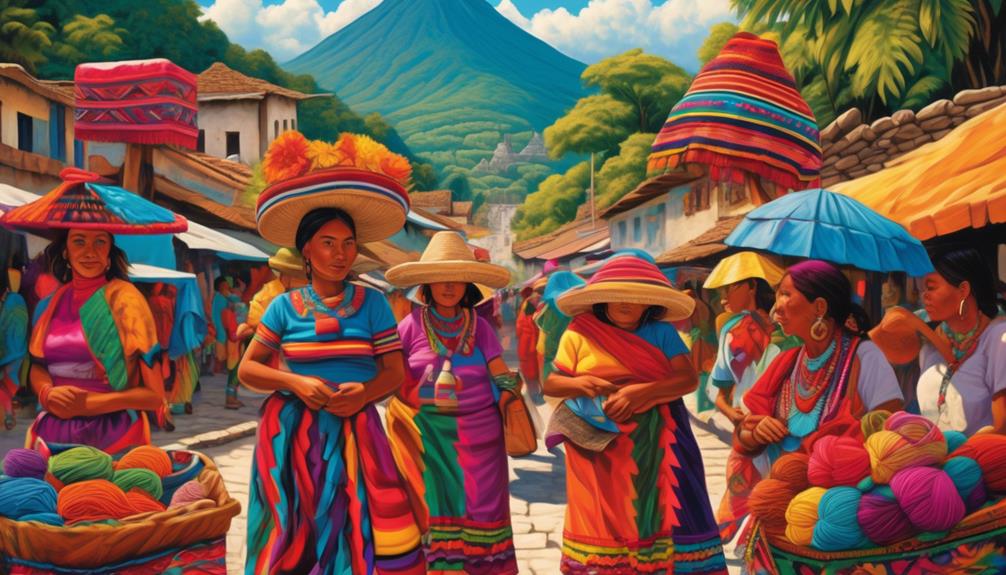
Centuries of cultivating the land and mastering traditional artisanal crafts have positioned the Maya community as vital contributors to Guatemala's economic tapestry.
The economic contributions of the Maya community are deeply rooted in their rich agricultural practices and traditional crafts, which have sustained their livelihoods and enriched the cultural tapestry of Guatemala.
- Maya Agriculture
The Maya community has preserved and practiced traditional agricultural methods for generations, cultivating staple crops such as maize, beans, and squash. Their sustainable farming techniques haven't only provided sustenance for their own communities but also contributed to the broader agricultural economy of Guatemala.
- Traditional Crafts
The Maya community is renowned for its exquisite artisanal crafts, including intricate textiles, pottery, and woodcarvings. These crafts aren't only a source of cultural pride but also a significant economic driver, attracting tourism and trade to the region.
- Economic Resilience
Despite facing historical and contemporary challenges, the Maya community has demonstrated remarkable resilience in sustaining their economic livelihoods through agriculture and traditional crafts.
- Cultural Preservation
The economic contributions of the Maya community are intertwined with the preservation of their rich cultural heritage, ensuring that traditional practices and crafts continue to thrive and contribute to Guatemala's economic landscape.
Preservation Efforts for Maya Heritage
Preserving the economic contributions of the Maya community through their rich agricultural practices and traditional crafts necessitates a focused approach on the conservation and promotion of their cultural heritage.
Heritage preservation for the Maya people is a multifaceted endeavor that requires deep community engagement and active participation. Efforts to safeguard Maya heritage include initiatives such as the preservation of ancient archaeological sites, the documentation of traditional knowledge and practices, and the revitalization of indigenous languages.
Community engagement plays a crucial role in these preservation efforts, as it fosters a sense of ownership and pride in the rich cultural heritage of the Maya people.
Furthermore, the promotion of Maya heritage through cultural events, educational programs, and sustainable tourism initiatives not only contributes to the preservation of traditions but also provides economic opportunities for the community. It's essential to involve Maya community members in decision-making processes and empower them to be advocates for their own heritage.
Frequently Asked Questions
What Are the Traditional Beliefs and Customs of the Maya People?
We're talking about the traditional beliefs and customs of the Maya people. Maya spirituality is deeply rooted in their connection to nature, with agricultural practices playing a central role.
Their beliefs revolve around a complex pantheon of deities and spirits, and rituals are performed to honor and communicate with them. These practices are intertwined with their daily lives, shaping everything from community gatherings to individual ceremonies.
What Is the Current Political Representation of the Maya Population in Guatemala?
In Guatemala, political representation for the Maya population is a complex tapestry woven with historical struggles for indigenous rights.
Our metaphorical political landscape resembles a mosaic, with progress and setbacks shaping the picture.
The Maya people have made strides in gaining representation in local and national government, yet challenges persist in fully honoring their rights and addressing historical injustices.
The journey for equitable political representation continues, intertwined with the rich cultural and historical fabric of the Maya population.
How Has Globalization and Modernization Impacted the Maya Community?
Globalization and modernization have greatly impacted the Maya community. Technology has brought new opportunities but also challenges to cultural preservation.
We've witnessed a delicate balance between embracing modern advancements and preserving our ancient traditions. The impact of technology has transformed our way of life, offering access to new markets and knowledge, yet it has also posed threats to our cultural identity.
This has sparked a crucial debate within our community about the tension between embracing modernization and preserving our heritage.
What Are Some Common Misconceptions About the Maya People and Their Culture?
Common misconceptions about the Maya people and their culture often stem from misunderstood traditions and historical inaccuracies. Our efforts to preserve our cultural heritage are often overlooked, contributing to these misconceptions.
It's essential to recognize the depth and richness of our traditions and the ongoing work to maintain them. By understanding the true complexities of our culture, we can dispel these misconceptions and foster a more accurate understanding of the Maya people.
What Are Some Important Environmental Issues Affecting the Maya Population in Guatemala?
Environmental degradation is a pressing issue for the Maya population in Guatemala. Climate change effects, such as extreme weather events and changing rainfall patterns, directly impact their agricultural practices and food security.
Deforestation and pollution further threaten their traditional way of life. These challenges are deeply intertwined with the cultural and historical identity of the Maya people, making it crucial to address these environmental issues to ensure the preservation of their traditions and livelihoods.
Conclusion
In conclusion, the Maya people, with their rich history and cultural traditions, form a significant part of Guatemala's population.
Their resilience in the face of challenges and their economic contributions are a testament to their strength and determination.
As we continue to preserve and honor their heritage, we must remember that the Maya community is a vibrant and integral part of Guatemala's cultural tapestry, weaving a beautiful and enduring legacy for generations to come.

